Ancient Psychedelia: Alien Gods & Mushroom Goddesses
Online Book - Chapter 1, Page 9
Back to Online Book Mainpage / Next Page (Chapter 1, Page 10)
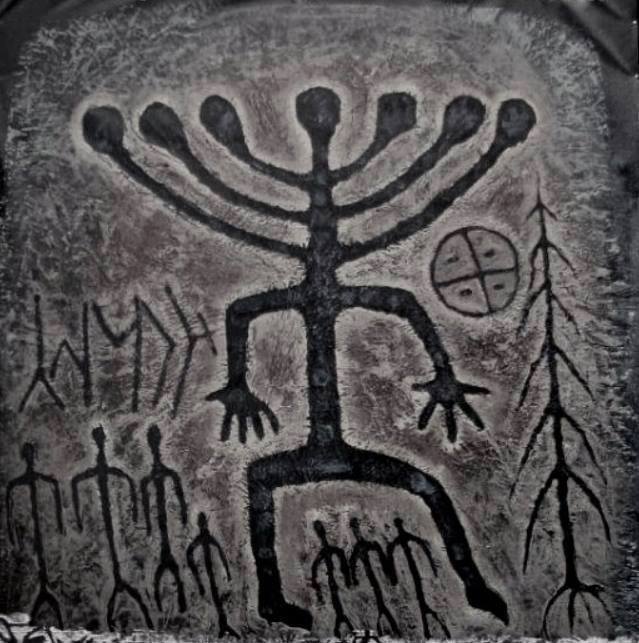 (6b) Khakassia, Siberia c. 3000 BC L: (6f) Southern Siberia, Оkunev culture, c. 200-100 BC 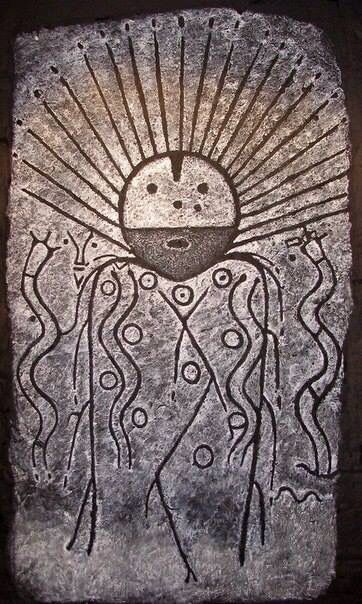 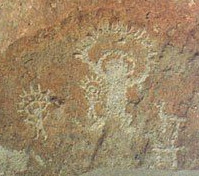 R: (7i) Toro Muerto, Peru c. 12000-10,000 BC In the Val Camonica part of Italy, similar cave art can also be found and many “ancient astronaut” believers like to point to this one piece as evidence that “spacemen” were here in Earth’s distant past (7f). Likewise, we see similar images portrayed on glyph art from Keep River National Park, Australia (2d). 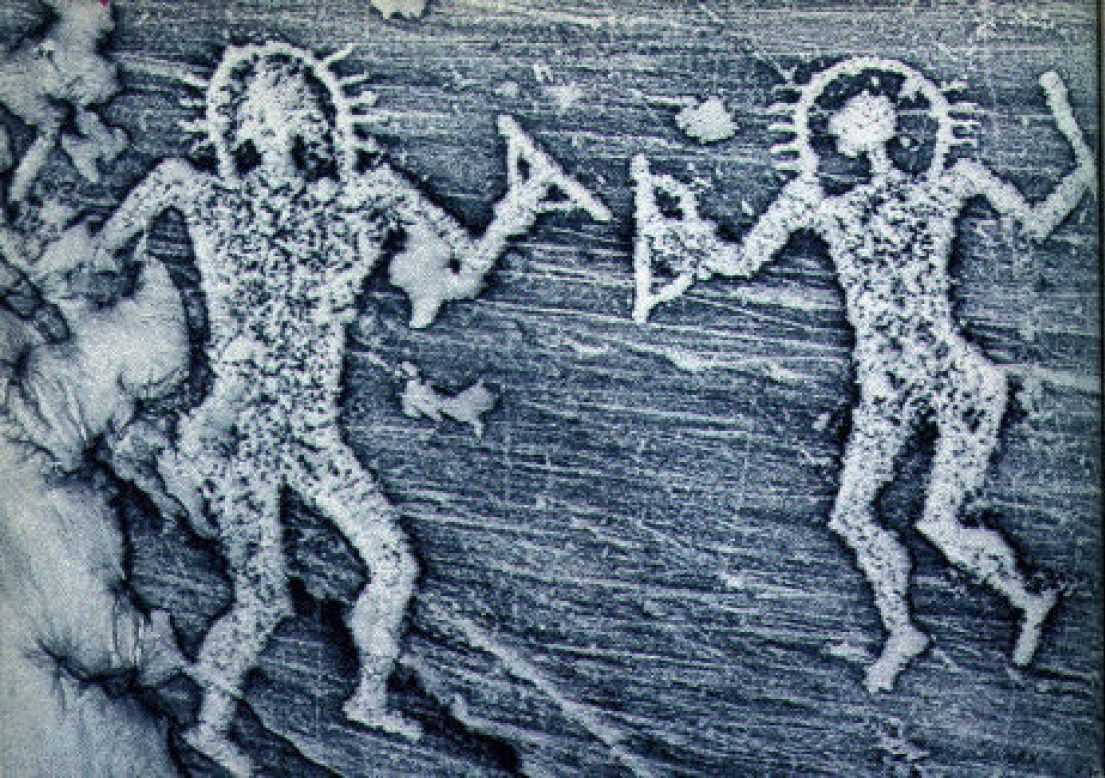 |
 (2d) Keep River National Park, Australia When one compares all these images and sees the mushroom influence alongside it all, it should be clear to anyone viewing these that they are entheogenic related images and not ancient astronauts. Though the artists were likely experienced psychonauts, themselves exploring “inner space.” What some people refer to as ancient astronaut “helmets” and others refer to as “sun rays,” I see as halos or auras of consciousness or enlightenment. In other words, “illumination.” In the US, there are numerous states which have rock petroglyphs which date back to pre-Columbian times, more likely to the late Stone Age. Most experts agree that the rock glyphs in the USA date from 100 AD to 1400 AD, however, I suspect some of them are far older. A primitive style mushroom glyph appear in Dinwoody, WY. In Dry Fork Canyon, Ut., there is a shaman figure with a mushroom hanging off of his elbow (5d) and in McKee Springs, Ut., there is a similar image of a figure is holding a mushroom (5c). 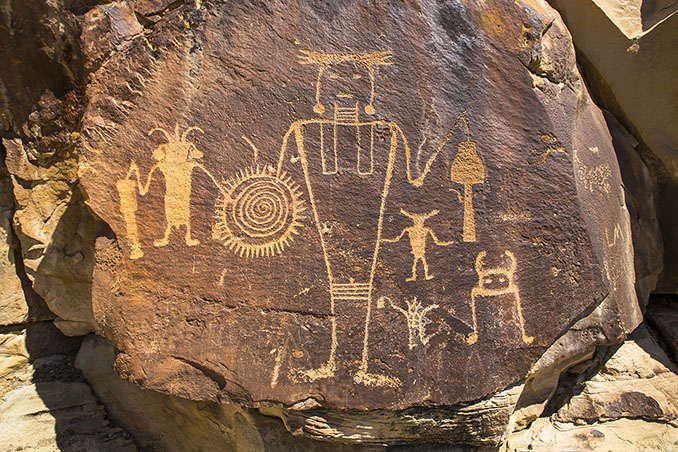 (5c) McKee Springs, Dinosaur National Monument, Utah c. 100 -1300 AD |
Go Back to Page 8